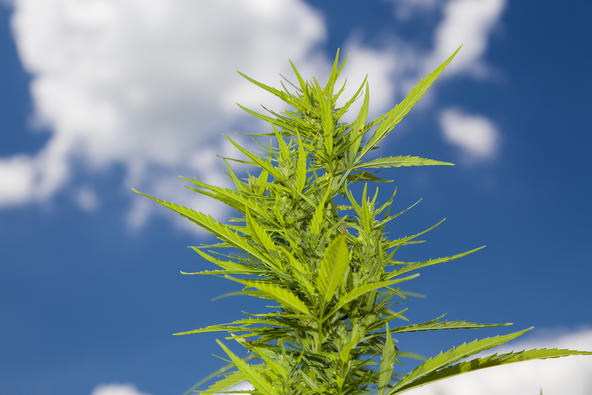UK Scientists Outline Hemp Research Needs

With hemp’s reintroduction into the United States as a part of research pilot programs in 2014, scientists need to learn much about the crop to help farmers improve yields to make it sustainable and economically viable. In a recent article published in the journal Trends in Plant Science, University of Kentucky College of Agriculture, Food and Environment scientists identify top research needs to help guide scientists interested in studying hemp.
“Continuing research and improvements are essential for hemp to become a profitable crop for Kentucky and the nation,” said Ling Yuan, research director of the Kentucky Tobacco Research and Development Center and professor in the Department of Plant and Soil Sciences. “Identifying and defining research priorities will help guide studies to address problems facing growers and the industry, as well as advance the understanding of the hemp plant’s basic biology.”
Hemp is a multipurpose crop that can be used for its seed, fiber and medicinal properties. It also has potential as a biofuel. Kentucky was a national leader in hemp production through World War II.
In the paper, Yuan and Craig Schluttenhofer, a UK postdoctoral scientist, discuss limiting factors to hemp production. These include seed shattering, seed size, better understanding and control of the retting process, controlling the sex of hemp plants, development of a high quality reference genome and establishment of a hemp germplasm collection.
“I want to see hemp be a long-term success for the farmers and businesses of Kentucky,” Schluttenhofer said. “Addressing these problems will help make that possible, but we need to start the research now.”
At the Kentucky Tobacco Research and Development Center, Yuan and Schluttenhofer are currently working on several of these problems. Through a public-private partnership with Atalo Holdings Inc., they are specifically addressing ways to combat seed shattering, which forces farmers growing for seed to harvest the crop before its fully mature and limits yields. They are also studying ways to breed hemp plants for a desirable sex, which is required by industry markets. Producers need male plants for optimal fiber production but female plants for seed and cannabidiol production. Cannabidiol is a cannabinoid used in food and dietary supplements marketed for consumer health and wellness benefits.
Additional research in their lab explores ways to select hemp seed for taste, which may help the crop expand into new markets. They have found that different varieties of hemp can produce weak to strong flavors including hazelnut and walnut.
Their entire paper, “Challenges Towards Revitalizing Hemp — A Multifaceted Crop,” is available here.
Credits
Text by Katie Pratt (UK Public Relations and Marketing).
